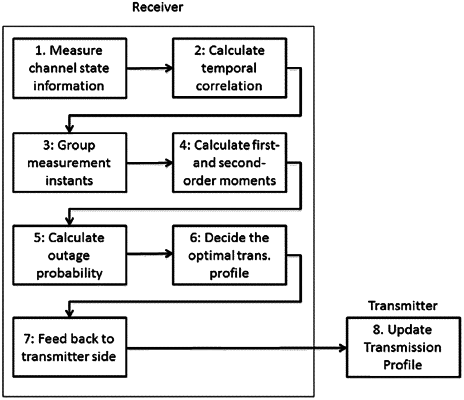| CPC A61B 5/0028 (2013.01) [A61B 5/0015 (2013.01); A61B 5/0024 (2013.01); A61B 5/0031 (2013.01); A61B 5/7203 (2013.01); A61B 5/7225 (2013.01); H04B 11/00 (2013.01); H04B 17/15 (2015.01); A61B 5/0205 (2013.01); A61B 5/14532 (2013.01); A61M 5/14244 (2013.01)] | 16 Claims |

|
1. An implantable node for a wireless network, comprising:
an ultrasonic transmitter-receiver pair for communicating with one or more other nodes of the wireless network, the transmitter-receiver pair having a transmitter and a receiver; and
a control circuit for adapting a transmission probability based on measured interferences, wherein the control circuit is in communication with the transmitter-receiver pair;
wherein the control circuit is configured to:
measure, with the receiver, sets of interference values between the receiver and a transmitter of another node of the wireless network, each set of interference values corresponding to one or more instants in a time slot on a communication channel;
calculate a first order moment and a second order moment for each instant based on the interference values corresponding to the measured instant;
calculate an outage probability value for each set; and
calculate the forward data generation rate and the forward transmission probability profile based on the calculated outage probability value and a predetermined threshold transmission rate, a predetermined transmission delay threshold, and a predetermined residual transmission error rate.
|